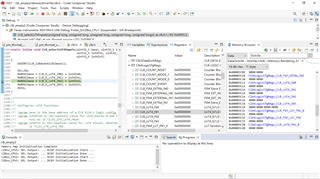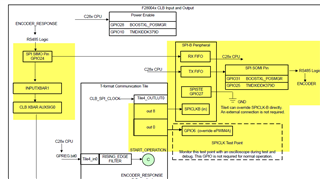Other Parts Discussed in Thread: LAUNCHXL-F280049C, C2000WARE, LAUNCHXL-F280039C, BOOSTXL-POSMGR, SYSCONFIG
Hi expert,
Tformat's code does not run successfully on F280049C.
I used SPIA and connected PWM4B (GPIO7) to SPIA_CLK (GPIO56).
The TFORMAT_FREQ_DIVIDER in tformat.h is changed to 10.
PM_TFORMAT_SPI in PM_tformat_Include.h is modified to SPIA_BASE.
When the program is running, the clock signal is always high and the TxEn signal is always low. And the program stops at 'while(tformatData.dataReady ! = 1) {}'
Can you tell me what could be the problem in this?
Regards,
Sibo








